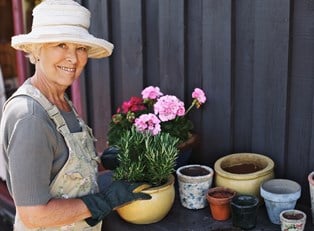Spring has sprung, and summer is on its way, but what does that mean for your garden? You want to keep your yard looking nice, but the cold temperatures of the impending winter leave you worried. Do not fret, for there are ways to you to keep your plants going no matter what chill comes through.
Spring Cleaning
First off, you should check plants with shorter life spans such as annuals and biennials. Consisting of mostly flowers and small shrubs, these plants will only live for a year or two years, respectively. Take some spring cleaning hints and choose between discarding these plants before the cold kills them or moving them inside to stay until next year. Many can in fact be moved to pots and transported indoors, so keeping many of these plants may just be a matter of indoor space and potting availability.
Determining Durability
Second, determine whether or not the hardier plants in your garden have the durability to live throughout the winters you experience. If the plants in your garden that should normally survive the winter are native to your area, then there is a good chance they have already developed the ability to weather the weather. However, if they come from a milder climate, or perhaps one with a considerably different ecosystem, then it is best to do a little more research to see if they will fare well during your particular cold season. If your winter is a bit too harsh for them, consider also potting and moving them inside.
Winter Soldiers
Next, look at the plants who will definitely live through the winter. If they are younger or have any problems during the warm seasons, they may need a little extra protection during fall and winter. Try blanketing the bottom of their stems or trunks with some insulation, whether it be an old blanket or some straw. Make sure water can get through, though, because even during dormant periods plants need nutrients.
New Additions
Finally, consider whether or not you want to add to your garden over the winter. Though it seems counter-intuitive, some plants can and do grow well during colder seasons. Saving this step for last ensures that you will have space for your fall and winter additions. Make sure that these new plants are spaced properly, as you do not want to have any one set of roots hogging an area if possible.
Now that you have your garden prepped for colder times, don't forget one last thing: maintenance. Those plants will still need proper food and water during chilly weather, so keep at it. If you've followed all these steps, you'll certainly have a fantastic garden to show off next year!



